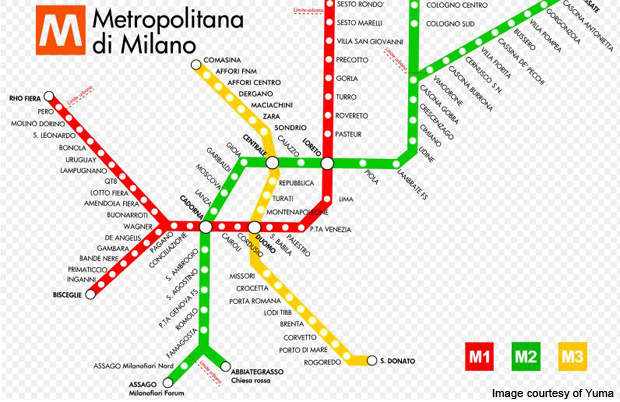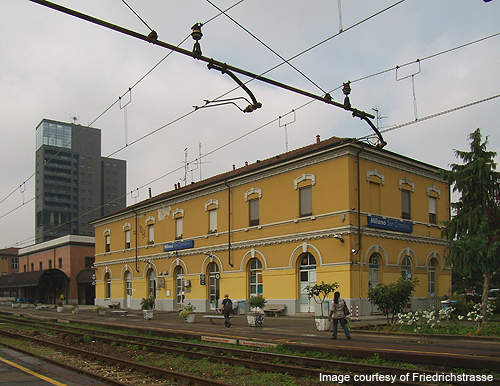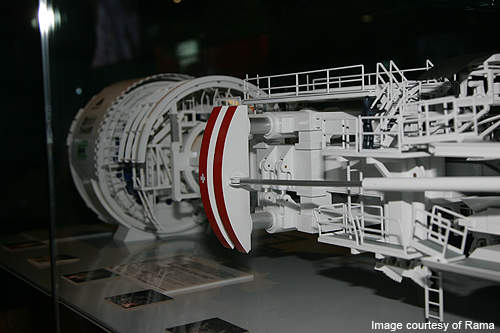Milan Metro is the 30th largest railway network in the world and ranks among the top ten rail network systems in Europe. It currently has three metro lines designated 1, 2 and 3 identified by colours Red, Green and Yellow respectively. The current network covers a total length of 88km and has 94 stations, serving a population of 1.3 million inhabitants.
The existing rail network covers around 20% of the municipal area and 25% of the urban region. Including the surface and suburban lines, the Milan Metro comprises approximately 50% of total urban travel. In order to further expand and improve the metro rail network, the Municipality of Milan is constructing a new suburban line, called Metro Line 4.
Line 4 will be a 15.2km (9.3m) long, fully automatic underground driver-less metro rail running from the west to the east, creating a link between Linate Airport and San Cristofore railway station. It will be identified as the Blue Line of the Milan Metro.
The project is estimated to cost €1.7bn. About two-thirds of the cost will be funded by the Italian State and Milan City Council. The project is scheduled to break ground in 2011 and be completed by 2017.
The project is expected to generate €2.7bn revenue based on guaranteed passenger numbers of at least 86 million people a year.
Project purpose and compatibility
Metro Line 4 will be serving the densely populated areas in city centre. In order to minimise disruption caused by construction activities, it has been designed to be compatible with other modes of transport and maintain sufficient groundwater level.
Metro Line 4 will have twin tunnels with single tracks in each direction. The project has been designed and will be monitored by Metropolitana Milanese. The company was also involved in the construction and supervision of the existing three metro lines.
The size of the tunnels will be comparatively smaller than those of the existing ones on the other three lines. A special structural plan has been designed to bore tunnels at the old centre stations.
Extensive use of tunnel boring machines (TBM) will be required. An open central shaft and blind-hole side tunnel technique will be implemented to facilitate passage of the TBM and minimise excavation. The technique will also allow boring of platform tunnels at considerable depths.
Metro line 4 infrastructure
Metro Line 4 will have a total of 21 stations, including interchange stations on Lines 1, 2 and 3. Trains will travel at headway of 90 seconds and carry 24,000 to 28,000 passengers an hour in each direction.
The line will operate on a complete communications based technology control (CBTC) system without a driver on board.
The 21 stations, including the terminal, are San Cristoforo FS, Segneri, Gelsomini, Frattini, Tolstoi, Washington-Bolivar, Foppa, Parco Solari, S. Ambrogio, De Amicis, Vetra, S. Sofia, Sforza-Policlinico, San Babila, Tricolore, Dateo, Susa, Argonne, Forlanini FS, Q.re Forlanini and Linate Airport.
The stations will be 60m long, instead of the 110m long stations which are part of lines 1, 2 and 3. The route will host a dedicated maintenance depot.
Contractors and important members
A concession contract for the design, construction and operation of Line 4 was awarded in June 2011 to a consortium lead by Impregilo. The other members of the consortium are Astaldi, Ansaldo STS, AnsaldoBreda, Sirti and the state metro operator-Azienda Trasporti Municipalizzata (ATM).
Valued at €255m, the contract calls for the installation of equipment required for signalling and automation, electric power supply, ticketing and passenger access control, Tetra and Wi-fi communication in trains, supervisory control, data acquisition (SCADA) and construction of platform edge doors.
It includes a concession period of 30 years, comprising six and half years of engineering and construction phases, and 23.5 years of the operational phase.
The contract was awarded after postponing the bidding deadline twice in 2010 because of new bidding rules issued by the Municipality of Milan.
The civil works, estimated to cost €870m, will be carried out equally by Impregilo and Astaldi.










